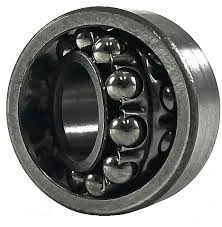
Jan . 02, 2025 08:25 Back to list
needle-roller thrust bearings
Needle Roller Thrust Bearings Design, Functionality, and Applications
Needle roller thrust bearings represent an essential component in modern mechanical systems, providing high load-carrying capacity within a compact design. These bearings are engineered to support axial loads in applications where space constraints are a significant consideration, merging efficiency and functionality seamlessly. This article explores the design, functionality, and diverse applications of needle roller thrust bearings, highlighting their importance in various industries.
Design Features
Needle roller thrust bearings primarily consist of cylindrical rollers—known as needles—arranged in a way that significantly reduces the friction between moving parts. The size and shape of these needles allow for a higher load-carrying capacity compared to traditional ball bearings while occupying less axial space. The design comprises several key components the raceways, the needles, and the bearing cage.
1. Raceways The raceways are the surfaces on which the needle rollers roll. They are meticulously engineered to provide smooth contact, minimizing wear and tear during operation. The raceway's geometry is crucial; it ensures proper alignment and distribution of the load across the rolling elements.
2. Needles The defining feature of needle roller thrust bearings, the needles are much longer than their diameter, making them slender. This unique aspect allows them to support heavier loads, making these bearings ideal for applications with limited axial space.
3. Bearing Cage The cage holds the needle rollers in place, keeping them evenly spaced and retaining alignment. This component is vital for the bearing's efficiency, as it prevents the needles from colliding with each other and reduces friction.
Functionality
The primary function of needle roller thrust bearings is to provide rotational support and reduce friction between moving components in mechanical systems. They are particularly effective in applications where high thrust loads are present.
The advantages of using needle roller thrust bearings include
- High Load-Capacity Due to their unique design, these bearings can handle substantial axial loads. This characteristic makes them suitable for automotive, industrial, and aerospace applications.
needle-roller thrust bearings

- Reduced Friction The needle design minimizes contact surface area, reducing friction and, consequently, energy loss during operation. This efficiency contributes to extended service life and improved performance.
- Compact Size Needle roller thrust bearings can maintain high load-carrying capacity while occupying minimal axial space, making them ideal for applications with stringent design limitations.
- Versatility These bearings can be used in various environments, from high-speed machinery to heavy-duty industrial machines, due to their robust design and adaptability to different conditions.
Applications
Needle roller thrust bearings find extensive applications across various industries. Some notable uses include
1. Automotive Industry In vehicles, needle roller thrust bearings are commonly utilized in transmissions, differential assemblies, and engine components, where they support axial loads and facilitate smooth operation.
2. Industrial Machinery Manufacturing equipment, such as conveyor systems, milling machines, and presses, often employ needle roller thrust bearings. These bearings enhance efficiency and performance, contributing to the overall productivity of industrial processes.
3. Aerospace The aerospace sector also benefits from the use of needle roller thrust bearings in critical applications like landing gear and engine components. Their high load capacity and reliability under varying conditions make them indispensable in flight mechanics.
4. Agricultural Machinery Harvesters, tractors, and other agricultural equipment are designed to withstand heavy loads and harsh environments. Needle roller thrust bearings ensure efficient operation and longevity in these demanding applications.
Conclusion
In summary, needle roller thrust bearings are a vital component in various mechanical systems, providing high load capacity, reduced friction, and space efficiency. Their unique design and functionality make them suitable for a wide range of applications, from automotive to aerospace industries. As technology continues to evolve, the importance of such bearings in enhancing performance and reliability cannot be overstated. Understanding their design, functionality, and applicability is crucial for engineers and manufacturers looking to optimize their mechanical systems for efficiency and sustainability.
Latest news
-
Premium Deep Groove Ball Bearings | High Speed & Reliability
NewsAug.29,2025
-
Durable Scaffolding Clamps - Secure & Reliable Tube Connectors
NewsAug.28,2025
-
Common Failures in Thrust Ball Bearings and Solutions
NewsAug.22,2025
-
How Tapered Roller Bearings Can Take Shock Loads
NewsAug.22,2025
-
Angular Bearings in High-Precision Spindles
NewsAug.22,2025
-
The Impact of Misalignment on Cylindrical Roller Bearing Performance
NewsAug.22,2025
